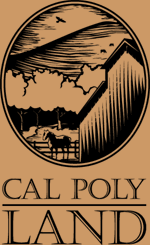|
What Are GMOs?
|
|
|
Genetically Modified Organisms (GMO): "one in which the genetic material has been altered in a way that does not occur naturally by mating and/or natural recombination (newscientist.com)." There are three different ways GM crops are manufactured: 1. The first group of products was designed to increase efficiency in production with their specific GM traits. One example from this generation of GM crops is GM tomatoes. Tomatoes were genetically modified so they would not go soft too quickly. 2. The second group of GM crops that were designed recently is known as “designer foods,” for specific nutritious needs. For example, Soya beans and oilseed rape with high oleic acid and low saturate. 3. The third group of GM crops was created to assist in the medical, pharmaceutical, and industrial world. These modified plants have allowed for doctors and patients to rely on them as medicine. For example, insulin is a genetically modified substance that helps diabetics.
|
|
|
What Crops are GM? There are many crops that are genetically modified. The four staple GM crops that the United States produces are corn, cotton, soy bean, and rapeseed. Other GM crops include sugar beets, squash, rice, melon, potatoes, and many other crops. In 2001 soybean and corn represented about 63% and 19% of the global transgenic area, with the remaining 18% shared between cotton (13%) and rapeseed (5%). Potato, squash, tomato and papaya each accounted less than 1% of the total (source ISAAA). Where are they grown? Between the years of 1998 and 2001, the global area of transgenic crops increased by 19% over the previous year, or 8.4 million hectares, to 52.6 million hectares in total. The four principal countries that grew the majority of transgenic crops were the USA with 35.7 million hectares (68% of the global area); Argentina, with 11.8 million hectares (22%), Canada with 3.2 million hectares (6%); and China with 1.5 million hectares (3 %). Other countries that also grew GM crops were Indonesia, Australia, South Africa, Mexico, Spain, France, Portugal, Rumania and Ukraine (http://www.isaaa.org).
Source: http://www.newscientist.com/channel/opinion/gm-food/ http://www.ornl.gov/sci/techresources/Human_Genome/elsi/gmfood.shtml
|

